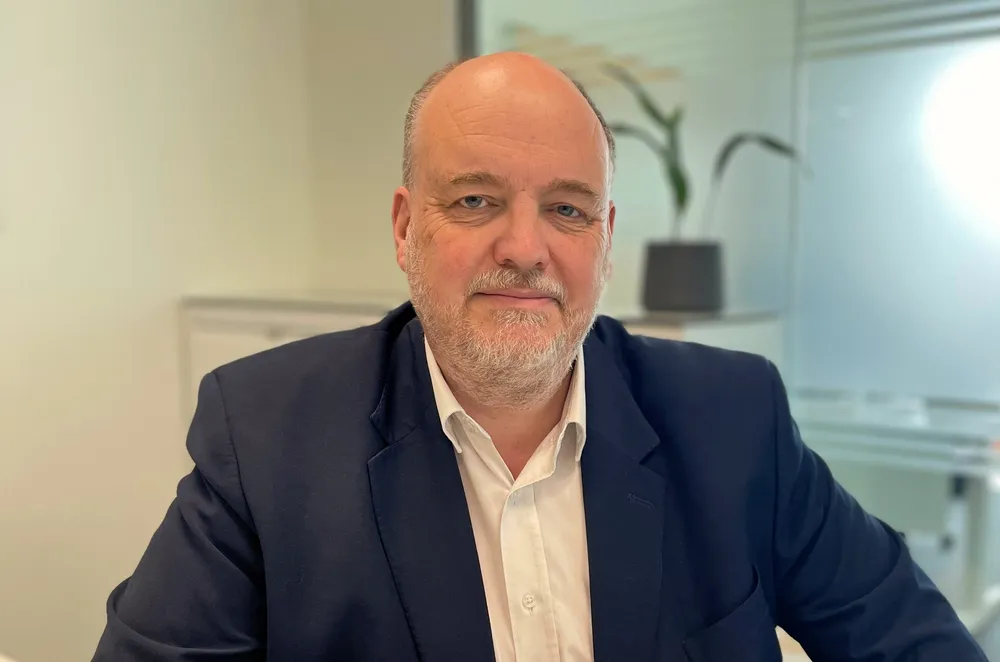'The window of opportunity is starting to close for Scottish floating wind assembly ports'
OPINION | Pioneering project Salamander can advance the de-risking process for floating wind off Scotland but urgent action is needed on infrastructure, writes Hugh Yendole

Over a billion people worldwide celebrated last month’s Earth Day, presenting a fantastic opportunity for our sector to recognise how far we have come towards a greener future.
It also served as a reminder of the ever-increasing demand for sustainable ways to power the future of our planet and it’s our responsibility to help drive technological innovation supporting the energy transition.
This year’s celebration coincided with exciting milestones marking the progress of our own Salamander floating offshore wind project.
In submitting our offshore consent application to the Scottish Government, we have reached a pivotal point in our development, the ultimate objective being delivering the real benefit of sustainable power to the domestic supply chain, and to the people of Peterhead and Scotland.
Current offshore wind capacity in Scotland sits at almost 3GW, split across seven wind farms powering almost three million homes (that’s nearly a fifth of Scotland’s entire population). It’s a great start but we still have a long way to go.
It’s no secret that the size of the prize, as indicated by the ScotWind and INTOG bidding rounds, is huge.
Scotland has all the geographical benefits required to become a hub of floating offshore wind and indeed lead the way in sector excellence. However, none of its assembly ports is capable of delivering gigawatt-scale floating technology. And the current window of opportunity is starting to close.
Salamander will reaffirm greater confidence in investors and industry by de-risking the commercial scale floating wind pipeline, even more so if it delivers well ahead of Scotwind.
From a consent and execution perspective, it will serve as a beacon of best practice, providing solid pathways and insights for future developments. Ultimately, this will empower increased engagement in the Strategic Investment Model (SIM), which will enable and drive essential technological innovation.
Permission to proceed with the onshore and offshore elements of the wind farm will help us make good on our promise to work with local suppliers on the construction phase of the project. This offers the wider Scottish business community the opportunity to accrue the wealth of expertise, skillsets and toolkits to build a world class cutting-edge and commercial floating offshore wind sector.
Developments like Salamander are fundamental to the case for investment in, and creation of, a domestic floating-specific supply chain. The successful deployment of Salamander is expected to pave the way for the smoother roll-out of future commercial scale floating projects, boosting Scotland’s sustainability credentials.
The quality of our consent application is a reflection of months of work across our dedicated teams - and we’re committed to working with the relevant decision-makers going forward. However, to realise our vision, we rely on the Scottish Government to enable a smooth and timely transition to the next phase of delivery.
Since the submission of Salamander’s EIA Scoping Report in February 2023, we have been collecting the necessary evidence, while ensuring we stick to a timeframe that will maximise the evident benefit to the sector. This has been an onerous task.
Industry and government officials are in agreement that the consent and application processes require streamlining. A view we support.
We value working with all stakeholders to ensure that Salamander receives a timely consent. We have worked hard to collaborate with industry to build confidence in an emerging industry.
We will continue to work hard to engage meaningfully with the needs of the community, to create something that residents are not only proud of but will benefit from. To this end, we have hosted two pre-application consultation events, with a third in the planning stage. We’re also currently ironing out how best we can give back to the community in practical terms.
Now it just remains for the Scottish government to work with us to ensure we can progress Salamander at the pace required so our project can start bringing sustainable power to the domestic supply chain, benefitting the people of Peterhead – and helping boost a world class commercial floating offshore wind sector here in Scotland.
(Copyright)